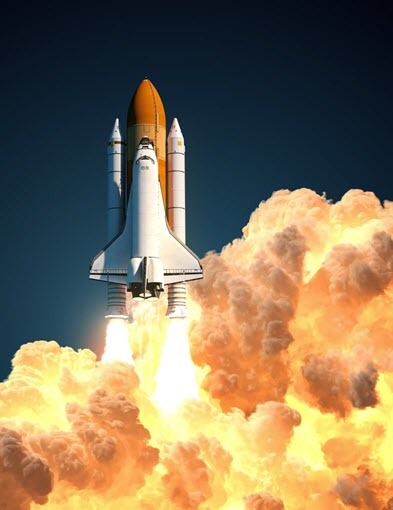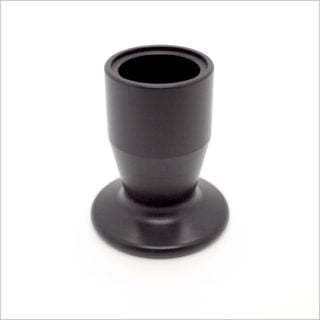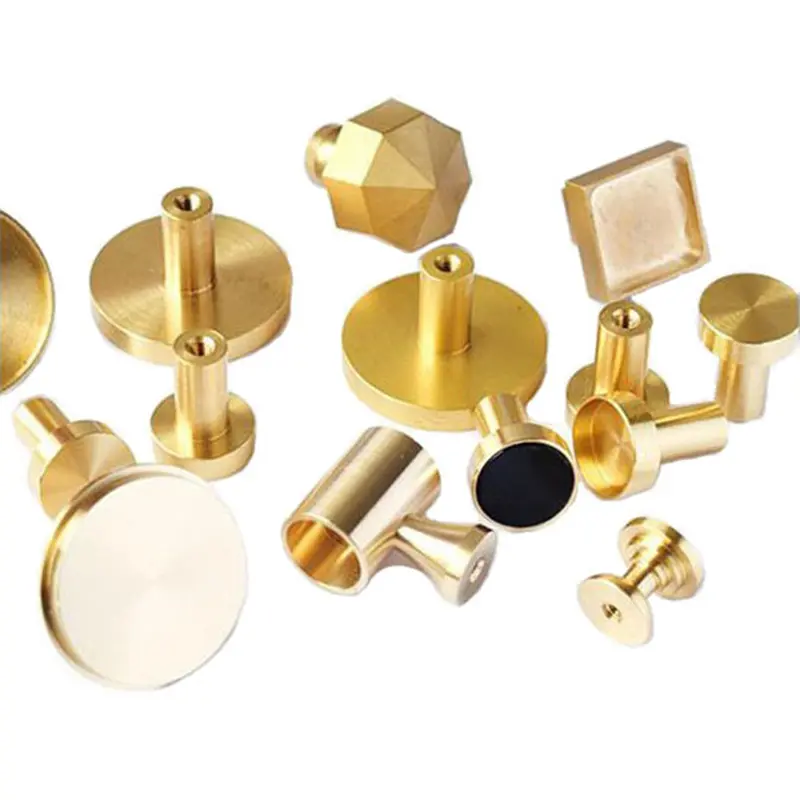A Beginner's Guide to Aerospace Machined Parts Production: Navigating the Complex World of Precision Engineering
Published Time:
2025-10-04
A Beginner's Guide to Aerospace Machined Parts Production
Table of Contents
- Understanding Aerospace Machined Parts
- The Importance of Precision Engineering in Aerospace
- Common Materials Used in Aerospace Manufacturing
- Machining Processes in Aerospace Production
- Design Considerations for Aerospace Parts
- The Role of Quality Assurance in Aerospace Machining
- Future Trends in Aerospace Part Manufacturing
- Conclusion
- FAQs
Understanding Aerospace Machined Parts
Aerospace machined parts are critical components used in the manufacturing of aircraft, spacecraft, and defense systems. These parts must meet stringent safety and performance regulations due to the challenging environments in which they operate. The production of these parts involves a complex interplay of engineering principles, advanced materials, and precision machining techniques.
The aerospace industry demands components that not only meet functional requirements but also adhere to strict weight and durability standards. **Machined parts** contribute significantly to the overall efficiency and safety of aerospace systems. Understanding the nuances of these components is crucial for anyone involved in their production or design.
The Importance of Precision Engineering in Aerospace
**Precision engineering** is at the heart of aerospace parts production. The ability to create components with exact specifications is vital, as even the smallest deviation can lead to catastrophic failures. Precision engineering encompasses a range of techniques that ensure high accuracy and repeatability in manufacturing processes.
The aerospace sector often employs advanced engineering methodologies such as **Lean Manufacturing** and **Six Sigma** to enhance productivity and reduce waste. By integrating these principles, manufacturers can improve their processes, minimize errors, and ensure that each machined part meets rigorous industry standards.
Common Materials Used in Aerospace Manufacturing
The choice of materials in aerospace manufacturing is critical for ensuring the integrity and performance of machined parts. Commonly used materials include:
- **Aluminum Alloys**: Lightweight and resistant to corrosion, aluminum alloys are widely utilized for various components, providing an excellent strength-to-weight ratio.
- **Titanium Alloys**: Known for their strength and resistance to heat and corrosion, titanium alloys are favored for parts that must endure extreme conditions.
- **Nickel-based Superalloys**: These materials exhibit exceptional performance at high temperatures, making them suitable for engine components.
- **Composites**: Advanced composite materials, such as carbon fiber reinforced polymers (CFRP), are increasingly used due to their lightweight nature and high strength.
The selection of the right material is crucial in achieving the desired performance characteristics while adhering to weight and cost constraints.
Machining Processes in Aerospace Production
There are several machining processes employed in the production of aerospace parts. Each process has its specific applications, advantages, and limitations.
CNC Machining
**Computer Numerical Control (CNC) machining** is a widely used method for producing complex aerospace components with high precision. CNC machines are programmed to execute intricate designs, making them ideal for creating custom parts.
The benefits of CNC machining include:
- High accuracy and repeatability
- Reduced lead times
- Ability to produce parts in various shapes and sizes
- Enhanced flexibility in design
However, CNC machining may not be suitable for all components due to its cost and initial setup time.
Additive Manufacturing
Additive manufacturing, commonly known as **3D printing**, is revolutionizing the aerospace industry. This process allows manufacturers to build parts layer by layer, using materials such as metals, polymers, and composites.
Key advantages of additive manufacturing include:
- Design freedom, enabling the production of complex geometries
- Reduction in material waste
- Shorter lead times for prototyping and production
- Potential for on-demand manufacturing
Despite its advantages, additive manufacturing may face challenges in terms of material properties and certification processes, particularly for critical aerospace applications.
Electrical Discharge Machining (EDM)
**Electrical Discharge Machining (EDM)** is a precision machining process that removes material from a workpiece using electrical discharges. This method is particularly effective for creating intricate shapes and details in hard materials.
EDM is especially valuable in aerospace applications where traditional machining methods may be inadequate. Its advantages include:
- Ability to machine complex geometries with high precision
- Capability to work with hard materials that are difficult to machine conventionally
- Minimal mechanical stress on the workpiece
While EDM is a powerful tool, it can be slower and more expensive compared to other machining methods.
Design Considerations for Aerospace Parts
Designing aerospace machined parts requires a deep understanding of both functional requirements and manufacturing constraints. Here are some key considerations:
- **Weight Reduction**: Aerospace components must be lightweight to improve fuel efficiency and performance. Engineers often use optimization techniques to reduce weight without compromising strength.
- **Heat Resistance**: Many aerospace components operate in extreme temperatures. Designers must select materials and geometries that can withstand these conditions.
- **Manufacturing Feasibility**: It's crucial to design parts with manufacturability in mind. Complex designs may not be feasible with certain machining processes, leading to increased costs and production times.
- **Safety Standards**: All designs must adhere to stringent safety and regulatory standards. This includes considering factors such as fatigue resistance and failure modes.
Effective collaboration between design engineers and manufacturing teams is essential for creating parts that meet both performance and production requirements.
The Role of Quality Assurance in Aerospace Machining
Quality assurance (QA) plays a critical role in the aerospace industry. Ensuring that machined parts meet the highest standards of quality is essential for maintaining safety and reliability. QA processes include:
- **Inspection and Testing**: Rigorous inspection methods, including dimensional checks and non-destructive testing (NDT), ensure that parts meet specified tolerances and performance criteria.
- **Certification**: Many aerospace parts require certification from regulatory bodies such as the FAA or EASA. This process verifies that the parts meet industry standards and are safe for use in flight.
- **Continuous Improvement**: Implementing quality management systems (QMS) helps manufacturers identify areas for improvement and maintain high-quality production processes.
By prioritizing quality assurance, aerospace manufacturers can reduce the risk of failures and enhance the overall reliability of their products.
Future Trends in Aerospace Part Manufacturing
The aerospace industry is continuously evolving, and several trends are shaping the future of machined parts production:
- **Digital Transformation**: The adoption of Industry 4.0 technologies, including IoT (Internet of Things) and AI (Artificial Intelligence), is enhancing production efficiency and decision-making processes.
- **Sustainability**: There is a growing emphasis on sustainable manufacturing practices, including the use of eco-friendly materials and processes that reduce environmental impact.
- **Advanced Materials**: Continued research into new materials, such as lighter alloys and composites, promises to improve performance and reduce costs in aerospace manufacturing.
- **Customization**: The ability to produce customized parts on-demand will become increasingly important, enabling manufacturers to meet specific customer needs while reducing inventory costs.
As the aerospace industry adapts to these trends, manufacturers must remain agile and innovative to thrive in a competitive market.
Conclusion
Aerospace machined parts production is a complex and highly specialized field that demands precision, quality, and innovation. From understanding the essential materials and machining processes to considering design and quality assurance practices, this guide has provided a comprehensive overview for beginners in the industry.
As technology advances and industry demands evolve, staying informed about the latest trends and techniques will be crucial for anyone involved in aerospace manufacturing. By prioritizing precision engineering and quality assurance, we can ensure that aerospace components meet the highest standards of performance and safety.
FAQs
1. What are aerospace machined parts?
Aerospace machined parts are components used in the manufacturing of aircraft, spacecraft, and defense systems, requiring high precision and adherence to safety standards.
2. Why is precision engineering important in aerospace?
Precision engineering is vital in aerospace because even small deviations can lead to catastrophic failures. High accuracy ensures the safety and reliability of components.
3. What materials are commonly used in aerospace manufacturing?
Common materials include aluminum alloys, titanium alloys, nickel-based superalloys, and advanced composites, each selected for their specific properties.
4. What machining processes are utilized in aerospace production?
Key machining processes include CNC machining, additive manufacturing, and electrical discharge machining (EDM), each suited for different applications.
5. How does quality assurance impact aerospace manufacturing?
Quality assurance ensures that machined parts meet stringent standards, reducing the risk of failures and enhancing the overall reliability of aerospace products.
Previous Page
Previous Page
NewsCenter
Beijing Pafinal Precision Machinery Co., Ltd.
Email:sales@pafinal.com

Address: No. 239 Huanhe South Road, Tianjin Pilot Free Trade Zone (Airport Economic Zone), Tianjin
中企跨境-全域组件
制作前进入CSS配置样式
sales@pafinal.com:
Whatsapp:
在线客服添加返回顶部
图片alt标题设置: PAFINAL
表单验证提示文本: Content cannot be empty!
循环体没有内容时: Sorry,no matching items were found.
CSS / JS 文件放置地




 2025-10-04
2025-10-04

